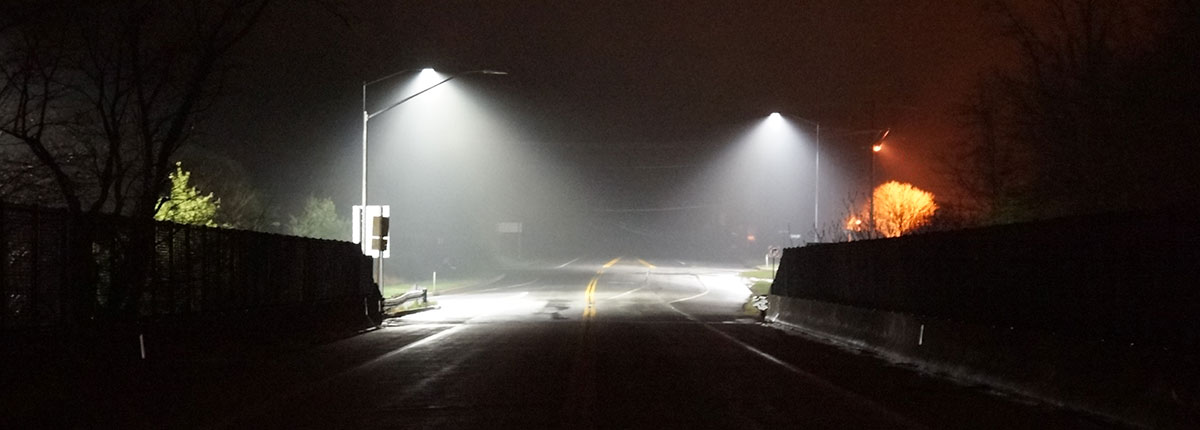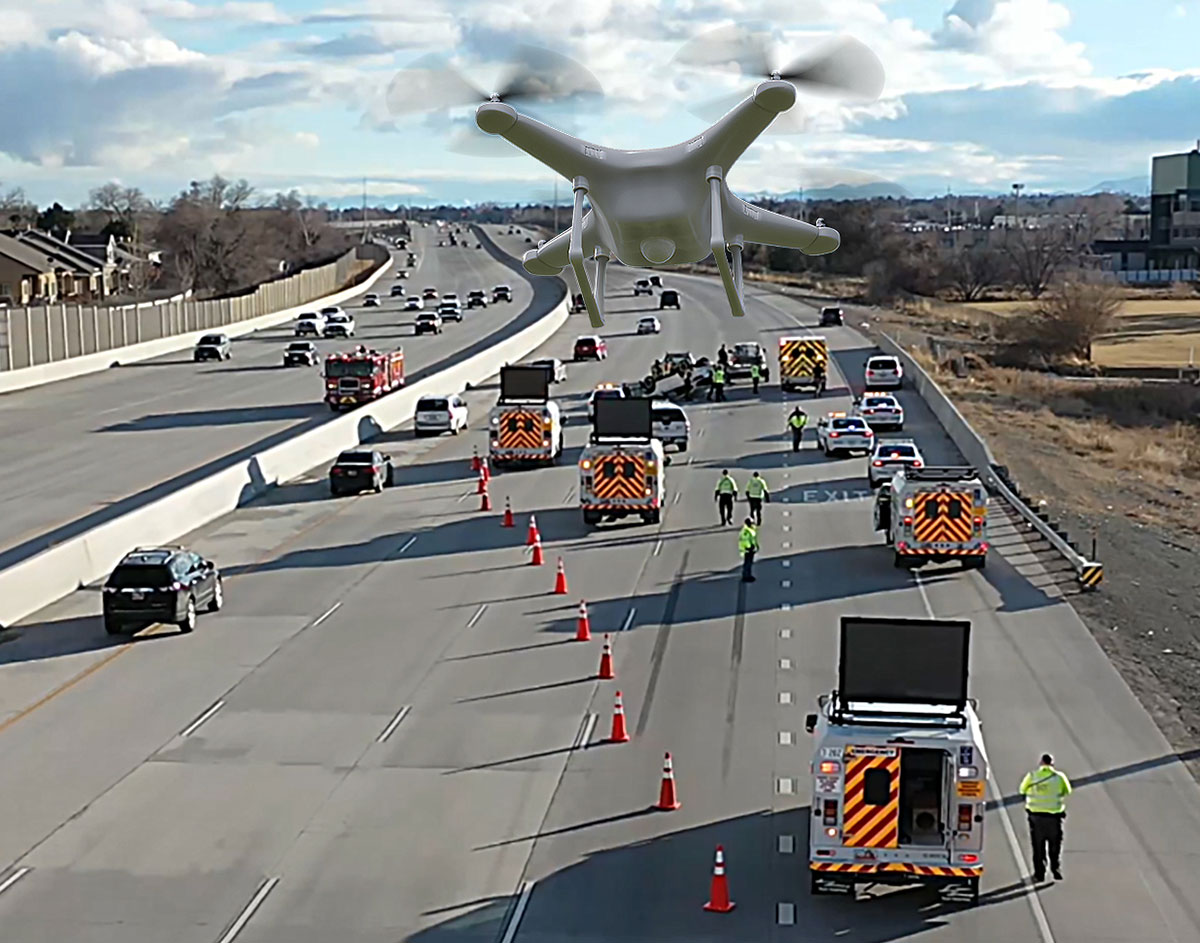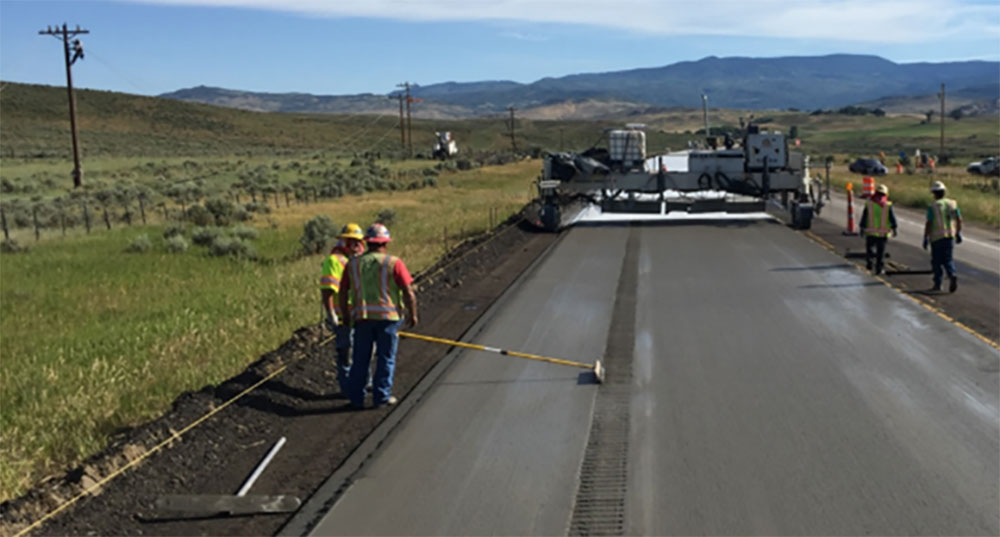December 22, 2022
EDC-7: Safety for All Users
EDC-7 will promote two innovations that enhance safety for all users. These innovations shine the spotlight on how improving nighttime visibility can protect motorists and pedestrians and how technology is changing and improving traffic incident management (TIM).
NIGHTTIME VISIBILITY FOR SAFETY
The nighttime fatality rate on the Nation's roadways is three times higher than the daytime rate, and 76 percent of pedestrian fatalities occur at night. Enhancing nighttime visibility for drivers and other road users will save lives. Several countermeasures and approaches are available that agencies can employ to improve visibility and reduce fatalities.

Improved nighttime visibility can reduce crashes and fatalities. (Credit: FHWA)
Findings show that almost 90 percent of the traffic fatalities in the United States happen in three main areas-intersections, pedestrians and bicyclists, and roadway departures. Enhancing visibility in these three areas with a targeted application of cost-effective and proven lighting and traffic control device countermeasures can address a large part of the nighttime safety problem. The improvements range from lighting training and design, which provides a wide range of education on where, how, and how much lighting is needed for different areas, to traffic control devices for vulnerable users, to ensuring these devices can be seen and are effective for all road users.
These improvements have shown proven results. For example, well designed lighting can reduce urban and nighttime crashes at intersections by up to 38 percent and reduce nighttime pedestrian-injury crashes by 42 percent. Additionally, using light-emitting diode (LED) light fixtures can reduce energy costs.
The EDC-7 team will provide tools including proven safety countermeasures and products, such as those championed by FHWA’s Safe Transportation for Every Pedestrian (STEP) and Focus on Reducing Rural Roadway Departures (FoRRRwD) initiatives, as well as updated and new tools for lighting design and application of traffic control devices.
Stay up-to-date on Nighttime Visibility for Safety. Subscribe to Nighttime Visibility for Safety e-News to receive updates on webinars, case studies, videos and more.
To learn more about nighttime visibility for safety, please contact Joseph Cheung, FHWA Office of Safety, Victoria Brinkly, FHWA Resource Center, or George Merritt, FHWA Resource Center.
NEXT-GENERATION TIM: TECHNOLOGY FOR SAVING LIVES
More than 6 million reportable crashes occur each year in the United States, resulting in 2 million injuries and more than 30,000 fatalities. Additionally, these create over 32 million disabled vehicles and countless incidents of roadway debris. These events place responders and motorists at risk of secondary crashes. FHWA’s national TIM responder training program has successfully trained more than 600,000 responders to clear incidents collaboratively, safely, and quickly. In practice, TIM on all types of roadways has been shown to save lives, time, and money.

UAS provide a bird's-eye view of traffic incident scenes (Credit: Utah DOT)
Today’s technology has the potential to leverage TIM responder training and enable incident responders to become more effective and efficient in their response duties. Clearing roadway incidents more quickly reduces exposure for incident responders and restores traffic for commerce, productivity, and quality of life for roadway users.
Technology such as smart emergency vehicle lighting can better inform roadway users about incidents, helping them avoid those locations or navigate around them more safely. Similarly, digital alerts can help responders at the scene of incidents be more aware and protected from the dangers of working near moving traffic. Use of unmanned aerial systems (UAS) is reducing the amount of time responders spend mapping crash scenes. New debris removal tools will enhance the safe removal of dangerous roadway objects.
Stay up to date on Next Generation TIM and subscribe to TIM e-news. To learn more about next generation TIM, please contact Paul Jodoin, James Austrich, or Joseph Tebo, FHWA Office of Operations.
Concrete Overlay Earns CDOT Accolades
The Colorado Department of Transportation (CDOT) has used concrete overlays to rehabilitate asphalt and concrete roadways for over 20 years. Concrete overlays are used on interstates and rural areas, such as State Highway 13 (SH13) in northwest Colorado.

This concrete overlay on SH13 provides a long-term, low-cost solution to a distressed asphalt roadway in northwest Colorado. (Credit: Castle Rock Construction Company)
On SH13, a six-inch concrete overlay covering six miles provides a long-term solution to a distressed asphalt roadway. CO let this project with alternates to identify the most cost-effective approach, and a six-inch concrete overlay provided the lowest bid received. The contractor for the SH13 project also reused the asphalt millings to establish a stable paving base on the shoulder, provide a weather-resistant surface, increase smoothness, and improve overall quality.
The SH13 concrete overlay project has won many awards, including the Colorado/Wyoming Chapter of the American Concrete Pavement Association (ACPA) Award for Excellence in Concrete Pavement Overlays; the American Concrete Institute State Award for Excellence in Concrete Pavement Overlays; and the ACPA National Gold Award for Excellence.
Overall, CDOT has built over 10 million square yards of concrete overlays. Despite heavy truck traffic, many of the roads with concrete overlays have exceeded their design life of 10 years and exceeded 20-year designs in some cases.
To learn more about concrete overlays or other targeted overlay pavement solutions (TOPS) products, contact Robert Conway, FHWA Resource Center.
Project Bundling Reference Database Provides Answers to Agency Questions
Do you have questions about project bundling but are unsure where to start? FHWA has a database of bundling references to assist and possibly accelerate your agencies’ implementation efforts. In it, you can learn from others and can research answers to the most common questions regarding bundling. This database captures important project bundling related information, the “how, why, and by what means,” to assist agencies and others in the development of bundling programs, initiatives, and individual projects.
This database is divided into five categories - ‘case studies’ highlighting successes and lessons learned for various bundle types, links to example bundling ‘contracts’, ‘programs’ of agencies who successfully utilized bundling, ‘references’, and ‘research’. The database is updated regularly as new information is gathered so you can always be up-to-date.
To learn more about project bundling, please contact David Unkefer, FHWA Resource Center.
Stay Up to Date on the EDC Innovations That Interest You Most

EDC teams are always on the move! If you blink, you could miss out on important webinars, case studies, tools, videos, and more. To never miss information for the EDC innovations that interest you most, visit the subscription page and select the topics you’d like to receive updates on directly from the teams that coordinate them.
Recent bulletins:
Road Weather Management 12/12/2022
TOPS 12/09/2022
About EDC
Every Day Counts, a state-based initiative of the Federal Highway Administration's Center for Accelerating Innovation, works with state, local and private sector partners to encourage the adoption of proven technologies and innovations to shorten and enhance project delivery.
EDC News is published weekly by the FHWA Center for Accelerating Innovation.
Notice:The U.S. Government does not endorse products or manufacturers. Trademarks or manufacturers' names appear in this presentation only because they are considered essential to the objective of the presentation. They are included for informational purposes only and are not intended to reflect a preference, approval, or endorsement of any one product or entity.
Recommended Citation:
U.S. Department of Transportation, Federal Highway Administration
EDC News; December 22, 2022
Washington, DC
https://doi.org/10.21949/1521897


